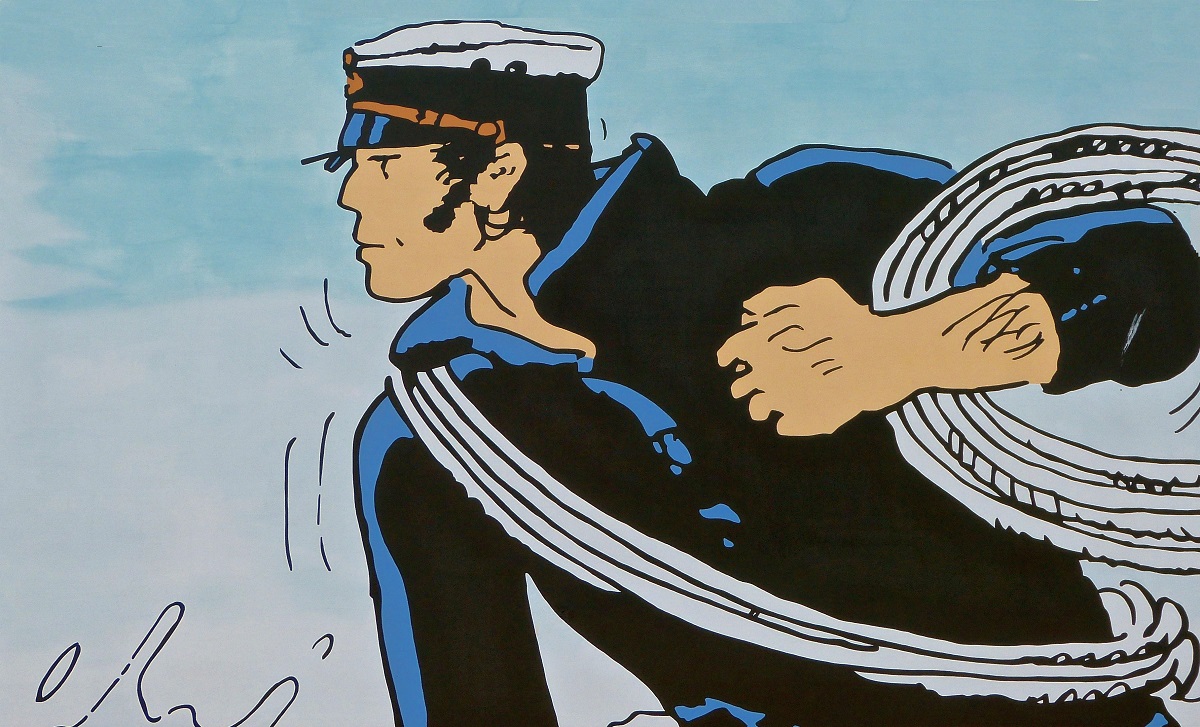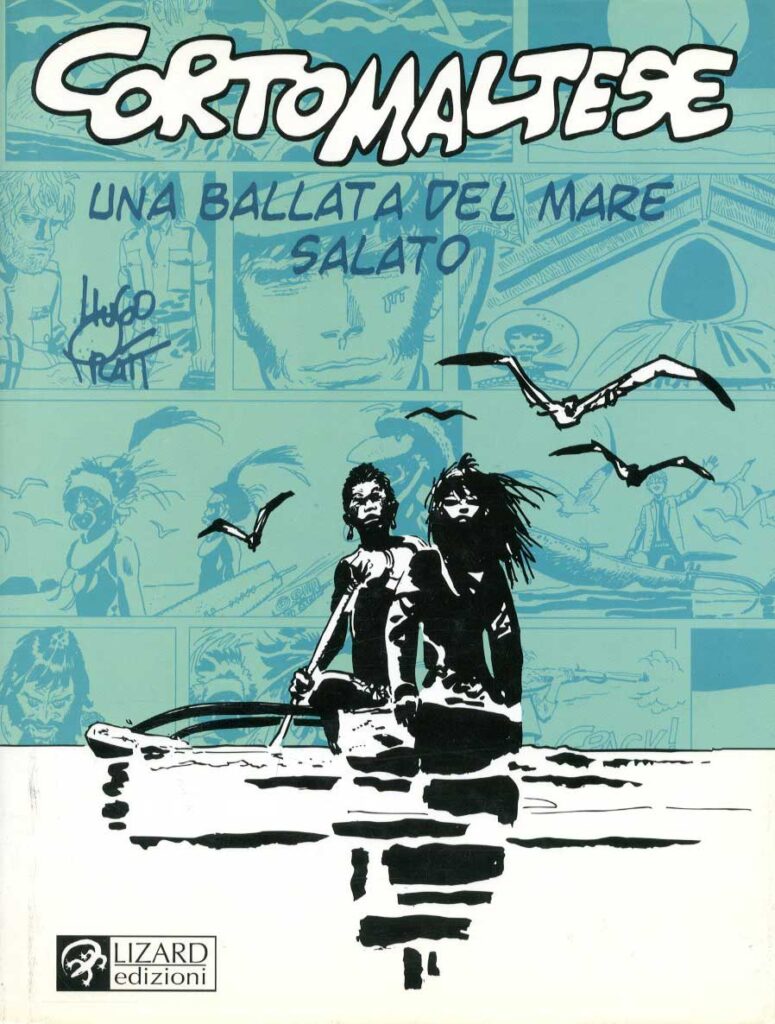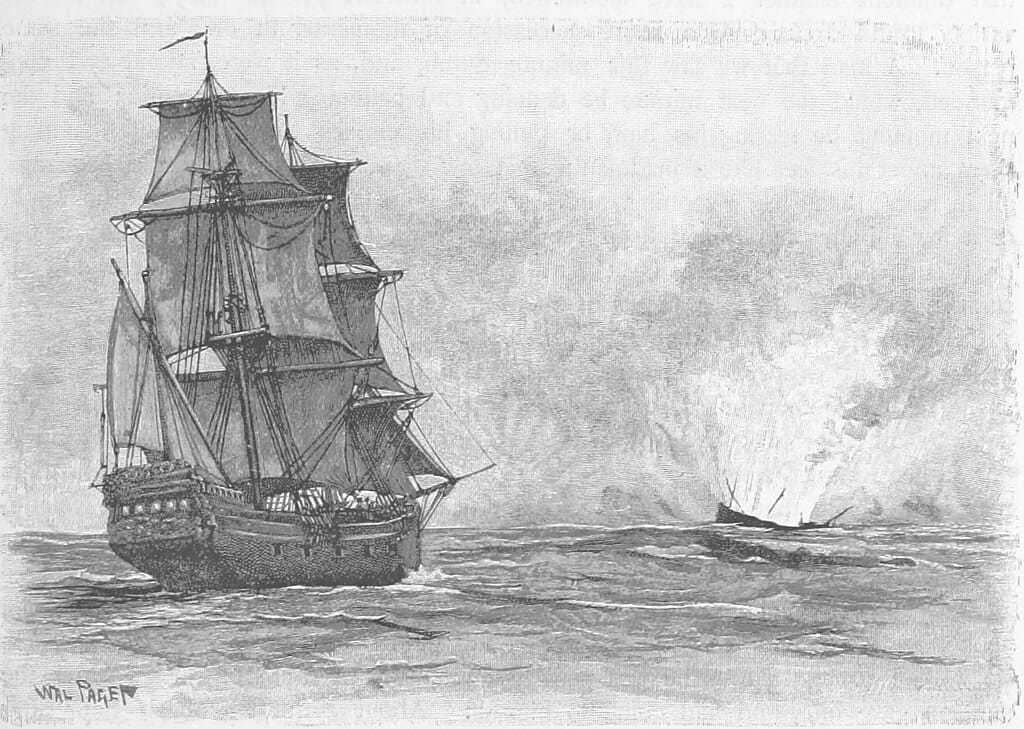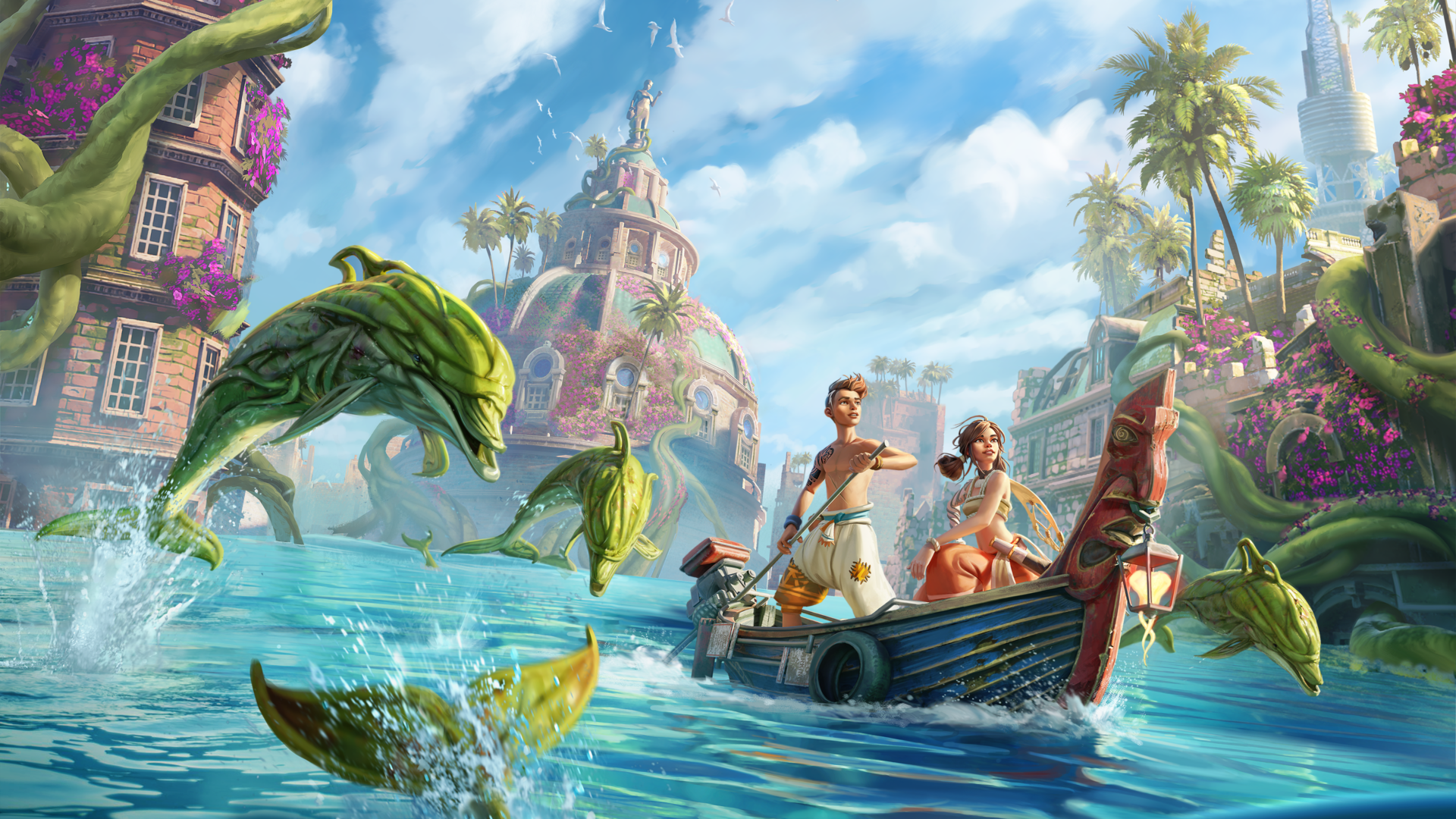
Corto Maltese and The Ballad of the Salty Sea | The Birth of a Romantic Hero
Year
Pirates, submarines, treasures and a scoundrel, Corto Maltese. The Ballad of the Salty Sea is Italian Hugo Pratt‘s first graphic novel, published in 1967 in the comics magazine Il Sergente Kirk. Set on the onset of World War I, it’s a classic adventure on the high seas, in which two cousins try to stay alive among mysterious pirate lords, German U-boats sinking ships, and untrustworthy sailors.
The Blue Lagoon and a sea of literature
Hugo Pratt crafted his story with a deep connection to literary adventure. The very plot of the book is inspired by Henry De Vere Stacpoole‘s The Blue Lagoon. Whereas in the novel, two cousins marooned on an island and are left to their devices to survive, in The Ballad of the Salty Sea, Cain and Pandora Groovesnore, still cousins, are quickly found by Russian pirate Rasputin and his friend and rival, Corto. Pratt took cues from writers such as Joseph Conrad and Herman Melville. Moreover, he scattered literary citations all over the comic. For example, young Cain compares himself to Robinson Crusoe and often cites Moby Dick. In addition, onboard a German U-boat a copy of Samuel T. Colerdige‘s The Rime of the Ancient Mariner can be found.
Pratt also researched Oceanian culture, representing gods, traditional songs, and masks. In a funny invention, he had the Oceanian characters speak in Venetian dialect. Pratt employs a diverse cast, with multiple groups and ethnicities represented. Pratt doesn’t hide the widespread racism. For example, Rasputin mistreats a Japanese destroyer commander, not only for the Japanese alliance with the English during WWI, but also for his ethnicity. Having said that, Pratt never shows any real difference in the characters’ skills. Moreover, Corto Maltese himself doesn’t join in discrimination and has friends and allies from every walk of life.

Corto Maltese, scoundrel with a heart
Talking about Corto Maltese, he is, without a doubt, a pirate. While he isn’t afraid to befriend violent criminals and he does help in kidnapping the young Grovesnore cousins for a ransom, he still follows his moral code. While today’s media is full of jerks with a heart of gold, Corto is like a World War I Han Solo. Just like the Star Wars smuggler, Corto is cynical, ironic, and quick with a gun. Under his façade of a tough guy, though, lies a human in contact with his emotions.
Corto Maltese is ultimately a Romantic character. While Solo hides behind sarcasm to protect himself from the seedy underbelly of the galaxy, Corto uses irony to keep a cool head to always come on top. He often becomes melancholic and is always seeking an adventure. He strives for the unknown. Moreover, he connects with the downtrodden. When forced to choose a side, he will help people in need. He even goes against the Monk’s wishes, saving Cain and helping him get rescued by the Allies.
A sketchy art style
The Ballad of the Salty Sea’s drawings are sketchy, rough and essential. Simple panels in stark black and white colors focus on the characters, rather than scenery. Pratt gives great attention to historical elements. Warships, submarines, and rifles are all drawn with great detail, a symbol of the author’s deep knowledge and strength of his research. Like other Italian comics such as Tex Willer, backgrounds are of secondary importance. Many panels have a simple white sky behind the characters. Having that said, during dramatic moments, Pratt forgoes his sketchy style. Highly detailed close-ups of the characters mark a change in atmosphere. Although from twenty years later, the sharp contrast and dramatic expressions refer to 1940s pulp stories, like Marvel’s Wolverine Noir.

The real story of Corto Maltese
Rather than being set in an unspecified moment in history, The Ballad of the Salty Sea is set in a precise time. During the story, Pratt touches on the political and economic issues of the world in 1913, from the Navy’s dependency on coal refuelling stations across the globe to the laws governing international warfare. Aside from the aforementioned racism, even social aspects are explored, as the rich Groovesnore are forced to live with criminals and society’s undesirables.
Hugo Pratt is no stranger to adventures himself. Living in Italian Ethiopia at the start of World War II, he was brought to a French concentration camp. After the Italian-Allies Armistice of 1943, he joined the fascist remnant of the Repubblica Sociale Italiana. He enlisted in the X Flottiglia MAS, a WWI veteran flotilla with marines and torpedo boats at its disposal. The flotilla split itself between the Italian Navy under Allied command and the German-backed RSI. Soon after, Pratt left with his grandmother to flee to Rimini. After being almost shot by Nazi Germany’s SS, he joined the English-American forces in Italy and helped them as an interpreter.
A European cult comic
The Ballad of the Salty Sea won the Prize for Best Album at the 1976 Angoulême Festival. In Europe, it quickly gained popularity. Pratt, initially undecided on whether to continue using the character, wrote thirty more stories with Corto Maltese as protagonist. After his death, a team of writers continued to publish new issues, starting in 2015.
In 2021, Bastien Vivés and Martin Quenhen created a modern reinterpretation of Corto Maltese, Oceano Nero, published by Casterman. The Ballad generated an animated TV show and a movie, both produced by a French-Italian team. In addition, statues have been erected to honour the character, like the one found in the Swiss village of Grandvaux.
Tag
Buy a ☕ for Hypercritic









